
18 minute read
Small Children, Dogs and Masked Strangers: Helen Chappell
Small Children, Dogs and Masked Strangers
by Helen Chappell
I don’t know what our pets are going to do when and if life goes back to normal and we can go out again. I don’t know what I’m going to do when we can go out again.
I work from a home office, like most writers, but I went out for about three hours the other day, and when I came home, Lilly, my cat, was sitting anxiously by the door. She greeted me as if I’d been gone for months, meowing and rubbing on my legs like I was a scratching post. In fact, when I actually went away for a month and a friend dropped by daily to attend to her basic needs, she was quite nonchalant when I finally fell through the door, smelling of strange cats, dogs and kids and California.
That’s feline nature in a nutshell.
Now, like most animals, she’s apparently grown very used to having her human around 24/7 dur-

Welcome Spring!

Tuscany in Bloom by Betty Huang Betty Huang, an accomplished artist herself, represents such notable painters as Master Jove Wang, Hiu Lai Chong, Ken DeWaard, Qiang Huang, Bernard Dellario and sculptor Rick Casali. Looking forward to seeing you! Look for the OPEN sign!
ing lockdown. Cats, as we know, believe this is their world and humans just live in it to serve them. Lilly has me perfectly trained. A plaintive cry is all she needs to gather my instant attention.
Whatya want, sweetie? Food? Brush? Pet?
I love Lilly. Cats are the perfect companion for writers. They mostly self-entertain, and they make great heating and comfort pads when they crawl up and sleep on the bed with you. They’re good companions. Mostly independent, on their own secret agenda and perfectly happy to sleep on the keyboard while you’re trying to type.
In short, Lilly is a good companion for me during lockdown. She keeps me from feeling lonely or forlorn. Well, Lilly and streaming content. Streamers are my friends, whiling away the hours looking for other people’s stories and charac-

Small Children social media. Covid and distance keep us apart, but it’s a small price ters to steal, and an escape from to pay to stay well, both them and grim reality. me. From the distance of social
I miss a lot, but it’s a small price media, kids are graduating from to pay to stay well. Keeping a low college. They’re growing from kids profile and staying out of the line into teens. Learning to cook and of fire is always a good idea, when I doing Tik Tok without me. can remind myself to do it. One-time toddlers are now bowl-
Can I say “don’t be a maskhole” ing and are capable of doing househere? I try to follow protocol and hold chores. Babies are learning to be a good citizen, but it’s not al- walk and talk. I’m not quite missways easy. ing it, but it’s not the same at dis-
During the pandemic, I have tance as it is up close and personal come to miss my kid and dog with my peeps. friends. I had no idea how much But at least I have those posts I would miss them until we were and photos and messages, so it’s separated. almost like being there. I’m not
All around me, kids are grow- like an obsessed grandma, whose ing up and I can’t see them, save on only thoughts are those precious
Spring ’21 Collection now in Store Happy Days Ahead!

410-770-4374
20 Goldsborough St., Easton, MD lizzydee.wix.com/lizzydee






Small Children The Auntie Mame who breaks the rules and helps you wink at kids. I am Auntie Bad Example and them is an important part of growa good godmother, however, and I ing up. do miss seeing the kids and hang- Life would be very dull if we all ing out with them. Everyone needs followed the rules. Stepping outan Auntie Bad Example, don’t you side the bounds, within reason, is think? a good life lesson. Within reason. I also miss my dog fix. Usually, when I’m out and about, people have dogs and I get a few minutes of attention from some creature that’s happy to see me. Dogs, unlike cats, are pretty social and enjoy playtime, and so do I. Much as I love pooches, I just don’t lead a life that would be good for a dog. I love dogs. Lilly doesn’t, and she will have no other animals before
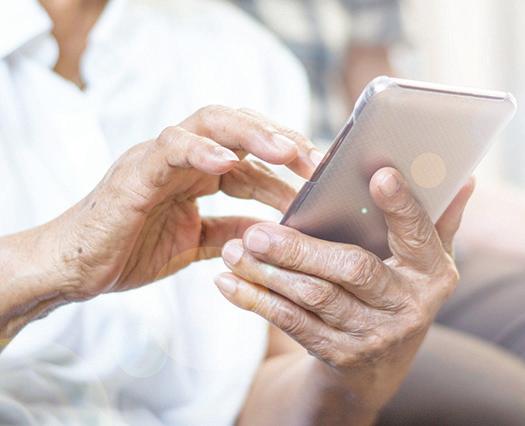
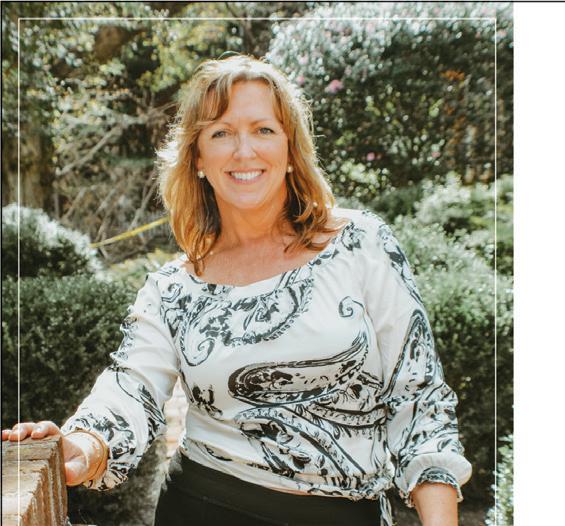


her, so that question is settled. No dog in this house, at least while Lilly reigns.
So, I rely on my friends’ and neighbors’ dogs for my canine fix. Dogs are mostly happy to see me because I give good ear and belly scritches and I chatter in doggie baby talk that almost the toughest pooch seems to enjoy.
Dogs are just a whole different world from cats.
If I went away for three hours or a month, a dog would be overjoyed to see me again without the guilt or the throwing of shade. In my experience, most dogs are just happy to see me. And mostly, the ones who aren’t, I can woo over to my side with some soothing noises and those behind-the-ear scritches canines love so well.
Dogs are pack animals. They like to run in groups, and as far as they’re concerned, if you pass the test, you’re part of their pack. I miss visiting with dogs, especially my friend doggies I used to run into around and about. Can’t visit my human friends? Can’t see my pooch pals.
I guess the thing about kids and dogs for me is you get to spend time with them, love them up, give them treats, get them spoiled, tired and dirty and when you’ve had enough, you can hand them back.
Most of all, I miss my friends. I miss having lunch, I miss concerts and openings and having coffee. I miss hanging out. Even an introvert needs her friends, which is the upside of social media (and believe me, I know all about the downside). At least you can stay in touch with Facebook.
Sometimes, you just miss human contact. So, you end up having long (and probably annoying) conversations with bank tellers and retail workers at drive-up windows, or supermarket workers and medical professionals who are already stressed to the max. I try to be amusing and pleasant, but you never know. My thin veneer of cheer might be the straw that broke the camel’s back.
Joan Wetmore
Realtor Intelligent, Knowledgable, Easy to Work With 410-924-2432 joanwetmore@msn.com
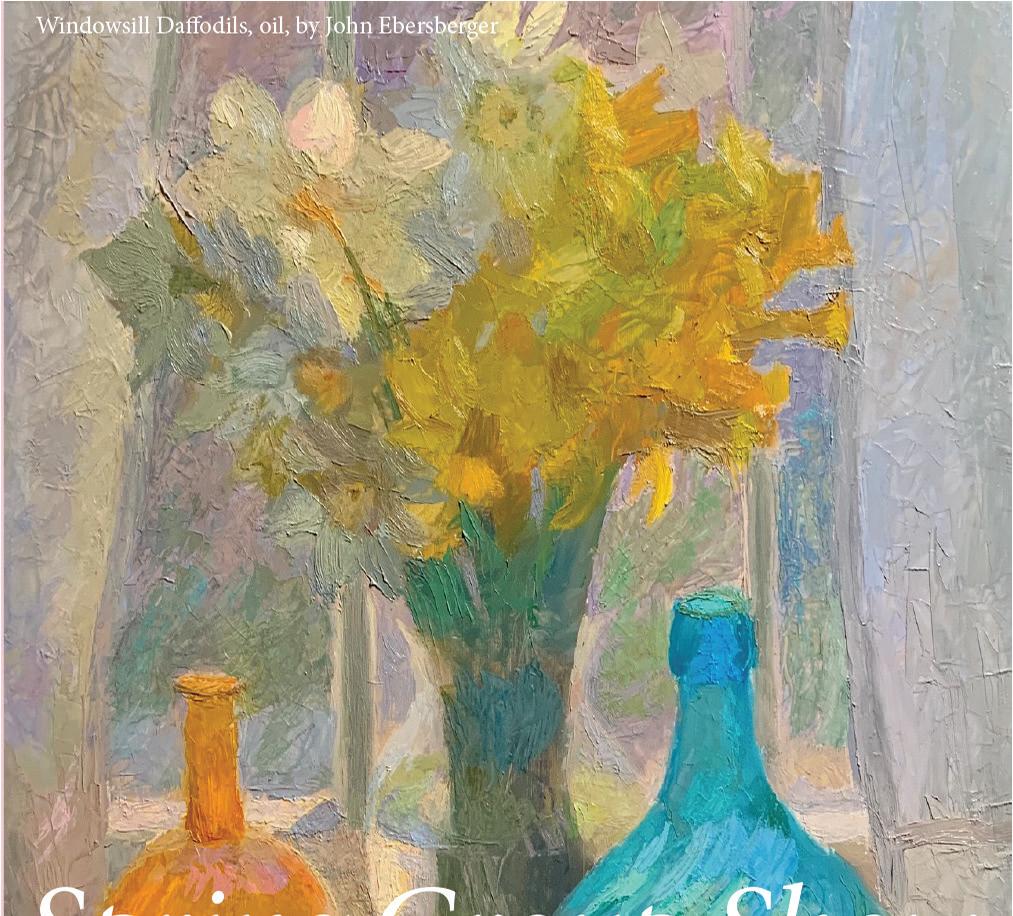
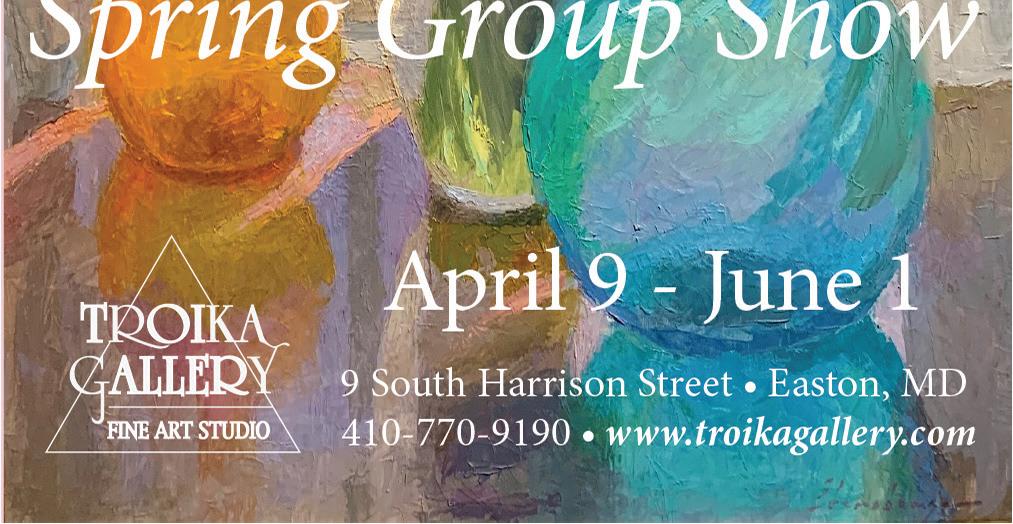

The other thing is running into people.
Sometimes, you run into some-
· 1887 Queen Anne Victorian Bed & Breakfast · 6 En-Suite Uniquely Designed Guest Rooms · Awards Winning 3-Course Gourmet Breakfast · Special Event Space for up to 150 people · LGBTQ Friendly - We Welcome Everyone! · Dog Friendly · On-Site Private Parking
14 N Aurora St, Easton, MD 21601 410-822-0605
HummingbirdInnEaston.com
one you know, but you don’t recognize them behind the mask, and they don’t recognize you, either, which leads to some awkward moments of mistaken identity. I mistook a masked perfect stranger in the dentists’ office for an old friend, and we had quite a conversation at cross purposes before we figured out we weren’t even acquainted.
Likewise, you can run into a masked friend at the supermarket and have no idea who they are. So, you try to ask a series of leading questions, hoping you can get a clue. Because of course, they seem to know you, and more about you than you do yourself. Sometimes I promise to get together when this is all over with someone who is a perfect stranger because they never dropped the essential clues. Sometimes I wonder if they’re walking away from me, mentally scratching their heads, going, “Who was that masked person?”
It sure wasn’t the Lone Ranger.
Helen Chappell is the creator of the Sam and Hollis mystery series and the Oysterback stories, as well as The Chesapeake Book of the Dead. Under her pen names, Rebecca Baldwin and Caroline Brooks, she has published a number of historical novels.
A Journey in Pink
Part IV: Surviving, Sharing and Sending it Forward
by Bonna L. Nelson
Tell me, what is it you plan to do with your one wild and precious life? ~ Mary Oliver, The Summer Day
“OVER, DONE, FINITO,” I wrote on a small white board that I took to my last breast cancer radiation treatment to celebrate with the medical team. I also wrote the same thing on a Post-it note and stuck it on my bare chest. The laughs and smiles that I received from the doctor and radiation therapists when I disrobed were uplifting and eased our goodbyes.
Life throws us unexpected challenges from which we try to learn and grow. Cancer has been the most overwhelming life challenge for me thus far. This is the last in my series of cancer stories, “A Journey in Pink.” In my previous stories, I shared my experiences with my breast cancer diagnosis, surgery, chemotherapy and radiation. Now I want to share what I have learned and where I am headed and raise awareness to help others take control of their lives and live them fully.
What am I now? I wondered a month out from final treatment after eight months of a roller-coaster ride of seeking a cure for my breast cancer via surgery, chemotherapy and radiation. I was completing a round of separate follow-up appointments with my oncology surgeon, medical oncologist and radiation oncologist. The first question that I asked each of the specialists was, “What am I now? What term can I use and hold onto to understand my condition on completion


of science- and research-based treatment?
I learned that I can call myself a SURVIVOR. A survivor is a person who copes with a bad situation or affliction and gets through.
According to Dr. Fitzhugh Mullen, a cancer survivor and founder of the National Coalition for Cancer Survivorship, “…there are “seasons of survival, the first season is surviving the treatment; the second season is beginning to return to normal life; and the third is the long-term adjustment during which the cancer comes to be viewed as an episode in the bigger context of one’s life.” (From a helpful cancer-related book, The Human Side of Cancer: Living with Hope, Coping with Uncertainty, by Jimmie C. Holland, M.D.)
I learned that I can say that I am in REMISSION. Cancer remission means that the signs and symptoms of my cancer are reduced. Remission can be partial or complete. I am in complete remission at this time. All signs of my breast tumor have disappeared, as confirmed by a postsurgery, post-chemo mammogram and a physical exam.
What neither I nor the doctors can say is that I am CURED. Cured means that there are no traces of cancer after treatment and that the cancer will never come back. For my type of cancer, they don’t like to say that until five years out. For me, that would be January 2026.
What do a lumpectomy surgery, 4 chemotherapy treatments, 16 radiation treatments, 9 doctors, 3 nurse practitioners, 6 nurses, 10 radiation therapists, 1 clinical study researcher, 16 medical assistants, an unknown number of specialists such as pathologists and medical physicists, 3 mammograms, 1 MRI, 1 sonogram, 4 CAT scans, 4 X-rays, 2 biopsies, numerous blood tests, numerous COVID-19 tests and thousands of dollars equal? Remission, survival, joy, peace, bliss, love and a future.
During my journey, I never said, “Why me?” I did ask, however, why so many of my friends ~ so many of

us ~ have cancer. Why is the cure so barbarous? Why can’t I just take a pill and make it go away? Why do the treatment and the drugs administered to curb treatment side effects have to abuse and torture the body so much? Why isn’t there a kinder cure?
According to the Susan G. Komen breast cancer research and support organization, a woman is diagnosed with breast cancer every two minutes. One in eight women will be diagnosed with breast cancer, with 268,000 Americans diagnosed each year. Breast cancer has surpassed lung cancer as the world’s most commonly diagnosed cancer.
According to the American Cancer Society, 99 percent of women with Stage I breast cancer live at least five years after treatment, and many remain cancer free for life. Breast cancer is more likely to occur in women over 55, and 80 percent of women with breast cancer have no family history of the disease.
I was advised from the beginning of my “Journey in Pink” that I had a more than 90 percent chance of surviving for five years. That hit me hard. The more than 90 percent sounded good, but not the five years part. FIVE YEARS??? I want to live another 25 to 30 years. I hope to have great-grandchildren to enjoy. I hope to see more of the world. I hope to write more stories. And I will do all of that!
So, what happens next? Now that I ~ we (my husband, John, my family and friends) ~ have completed the prescribed regimen, finished the war, ended the journey. What’s next? What can I do to live 25 to 30 more years? How can I live my life to the fullest and help others going through tough times?
Now I am in the final days of “season one” and moving into “season two” of cancer survivorship. I am still healing from cancer treatments, overcoming fatigue, overcoming low energy, overcoming low red blood cell counts, overcoming baldness, overcoming radiation skin burns and trying some prescribed vitamins for tinnitus. My medical team says it will take six months to a year after treatment to feel truly normal again.
As Joni Rodgers said in her book Bald in the Land of Big Hair, “It hadn’t occurred to me that the return journey from Planet Cancer would
almost be as turbulent as the first leg of the trek.”
I am processing and reflecting on the past eight months. I am recalling what I learned about cancer during my adventure. I am a bit shellshocked, like other cancer survivors that I have read about. I have a bit of Post-Traumatic Stress Syndrome related to the cancer experience, some psychological turmoil. We just kept marching forward. Okay, we said, what’s next after surgery, what’s next after chemotherapy, what’s next after radiation? Then, all of a sudden, it was over. I am thinking about what I have just been through and wondering what’s next.
How do I answer Mary Oliver’s question? What is it that I plan to do (with what is left of) my “one wild and precious life”? Do I live in fear of recurrence, or do I live each moment to the fullest? How can I survive, share and send it forward? I am going to kick off a new precious life journey, the journey to bring wellness, peace, grace, joy, fulfillment, courage, strength and love to my world and the world around me. What follows are my tips for living the good life, things that I am doing or plan to do, and I hope that you might find some useful ideas for your journey
TIP #1: Keep up with routine medical checkups and tests, mammograms, etc., as early detection saves lives. Make sure that you understand your options.
I am just beginning “season two.” I am working on returning to a normal life. Medically, I will be seeing all of my specialists at prescribed intervals and undergoing periodic testing for years to come, at least until that five-year CURE target. I will have my port removed in a few months. I have completed a round of follow-up appointments and tests, and I am now free from visits for a few months. Not that I won’t miss my team, but it is so nice to not have any appointments or tests for weeks ahead!
I have also completed a round of cancer-delayed annual checkups. Because of what I experienced during and after chemo treatments, I feared that the chemo had caused damage to my mouth, teeth, eyes and ears and that radiation had caused more skin cancers. I received mostly good news: my mouth, teeth, eyes and skin are fine. Sadly, the tinnitus
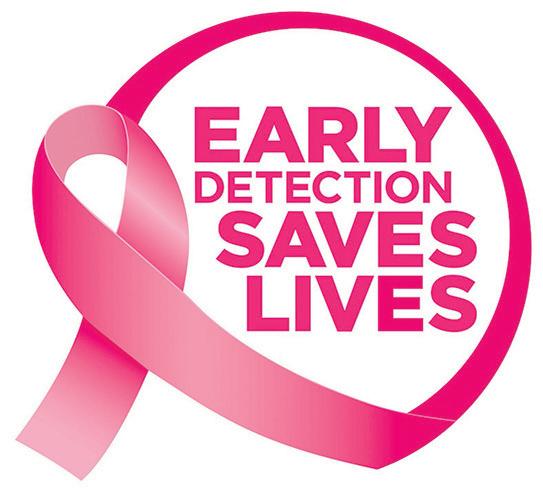
*Afteryoureceiveyourpatient numberfromMMCC




Journey in Pink pre-cancer. I also used my indoor spin cycle and health rider (like an will probably be with me for life. upright rower) and am now upping
TIP #2: Exercise. Add movement my game on both. to your day for physical and mental I have recently added a new class well-being, starting slowly and that is very inspiring, the YMCA’s then building up your strength and Live STRONG Cancer Survivor Exerendurance. cise Program. The twelve-week class
Physically, all the specialists rec- is taught by Barbara Jarrell, with ommended that I continue exercising seven participants on Zoom. Barb during and after treatment, so I did starts each class with a friendly chat the best I could. I continued my 15- that allows us to share our cancer year favorite YMCA class, Floor, Core stories, our interests, our exercise and More, a class combining cardio, programs, our daily challenges, etc. strength and balance on Zoom, It is a social and emotional support taught by Wendy Palmer. With my opportunity. We work on developing strength zapped while in treatment, cardiorespiratory fitness, muscle I had to sit down between songs to strength and endurance, flexibility, catch my breath and rest, but now balance and confidence. We also I can remain standing, though not have speakers on nutrition, sleep, yet able to work at the level I did acupuncture, yoga and other topics. Classmate survivors have various types of cancers and are both joyful and inspirational. My latest physical accomplishment is walking the mile around my neighborhood on a nice 60-degree day for the first time in months. I haven’t had the energy or stamina and couldn’t handle the cold. During my first jaunt, I had to stop every few houses to catch my breath. But I did it! Now that I know I can, I will continue to walk and will slowly build up my lung capacity and endurance to try to regain normalcy. TIP #3: Eat well for life. Maintain a healthy weight. Another side effect of cancer treatment is either weight gain or loss.
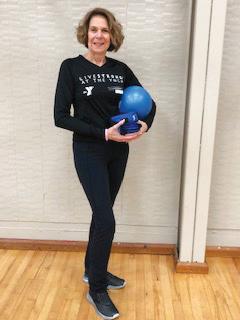
For me, it was gain. A doctor told me that 80 percent of cancer patients gain weight and that it takes a year or so to lose. Because cancer treatment can be stressful, stress eating is common. For me, it was chocolate milkshakes as a treat after chemo treatments and the many candies, cookies, homemade breads and muffins that family and friends gifted us.
Also, chemo changes the taste of food. Good-for-you foods like salads had no appeal. There are also cautions about eating foods ~ raw foods, for example ~ to prevent bacterial infections in a compromised immune system brought about by cancer and treatment. Now I am trying to eat cleaner and less. I have upped my nutrition game plan, including more fruits, vegetables, whole grains and fish, fewer sweets, sugary foods and non-nutritious foods and drinking plenty of water.
TIP #4: Practice gratitude and send it forward. Sharing is healing. There is healing and purpose in doing something for others.
Throughout my journey, I thought about how I could help others with challenges. How could I turn my cancer diagnosis into doing something special to help others? How could I give back? During my treatment, my nightly prayer list grew to include cancer and Covid-19 patients, and my nightly gratitude prayer giving thanks for the blessings in our lives expanded to sending cards, emails and texts to those I thought could use a lift. I also found other opportunities along the way.
The Hope Scarves organization gave to me and allowed me to give back. The organization has reached more than 16,000 individuals in all 50 states and 24 countries. The international non-profit shares hope with people facing cancer through giving away scarves, sharing cancer stories and funding cancer research. They sent me a beautiful shimmering cream scarf with a story from a cancer survivor. They asked me and I agreed to share my cancer story, which will be passed on to others to inform, inspire and empower them. The Lydia Project provides free services to individuals fighting any type of cancer anywhere to facilitate healing. Their support includes ongoing correspondence and encouragement every month for at least twelve months. I have received beautiful uplifting cards from four volunteers, for which I am thankful











